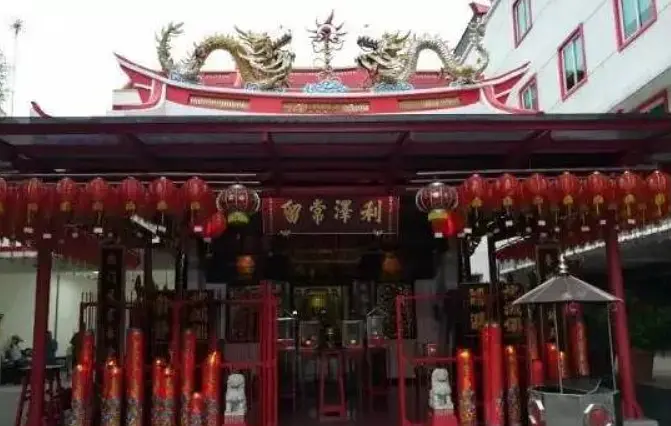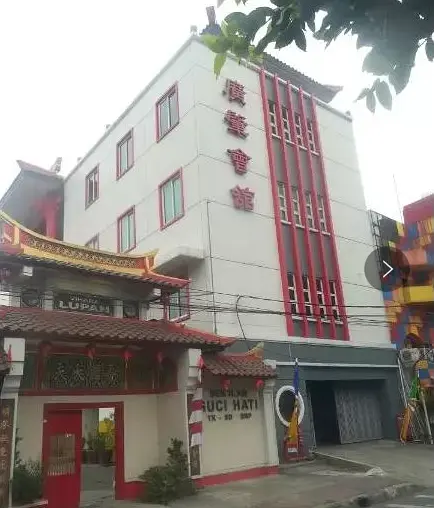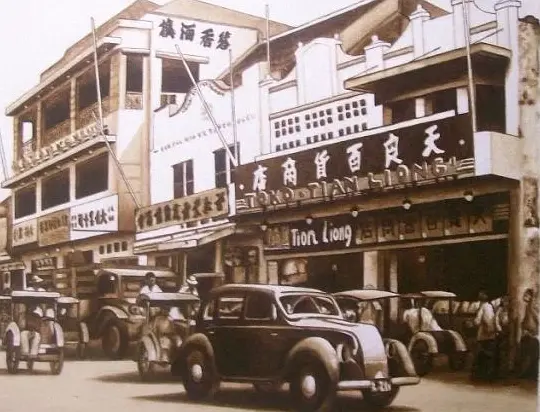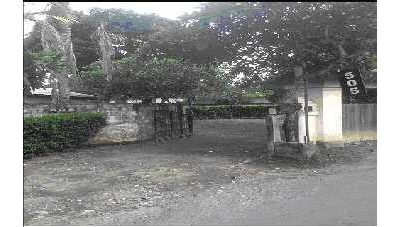Register now to join Ufos Travel and make travel friends around the world
Login to follow friends and send messages. No Account? Register
×
I lived in the Pinangsia area of Jakarta for two years. This place is actually called Pinangsia, which is what the local Indonesians call it. I don't understand why the Chinese call it Pinangsia. Pinangsia is one of the traditional Chinese commercial districts in the old city of Kuta, Jakarta. It is neither big nor small, with four streets, none of which are very wide. There are two horizontal streets in the east and west, and two vertical streets in the north and south, forming a tic-tac-toe shape. Most of the residents are Chinese.
East Street has few stores, is relatively quiet, and is relatively clean. The old buildings on both sides are only three or four stories high, mostly offices opened by some small and medium-sized companies; West Street is lively and noisy, with hardware stores, lighting stores, building materials stores that wholesale floor tiles, and large and small stores selling kitchen and bathroom equipment lined up on both sides. People come and go from morning to night, business is booming, and it is often congested.
The other two vertical streets in Pinangsia are the first street in the south and the second street in the north. There is an old hotel at the north end of the first street. It seems that there are not many guests, but it is still operating. Further on is a Chinese restaurant, medium-sized, with slow business. According to an old friend, the Fujian braised noodles here were very famous, and diners from all over the city often came here. I grew up in the north and love noodles. I passed by this place that day and felt a little hungry. On impulse, I walked in and ordered two bowls at once. As a result, the braised soup tasted sticky. I don’t know how much starch was added. How can it be eaten! It’s far worse than the Shanxi knife-cut noodles I ate in China. I barely ate one bowl, and I had no appetite for the second bowl. I quickly paid and left.
Next to this Chinese restaurant, there is an ancient temple-Lu Ban Xianshi Temple. Lu Ban is the ancestor of Chinese civil engineering and a native of Lu during the Spring and Autumn Period. How could there be a Lu Ban Temple in Nanyang? It turns out that most of the early Guangdong overseas Chinese who came to Indonesia worked as carpenters. So they worked together and built a temple for the "ancestor" Lu Ban in Batavia (the former name of Jakarta), which was under Dutch colonial rule at the time, during the Tongzhi period of the Qing Dynasty. This temple became a gathering place for the Guangdong and Zhaoqing people in Coconut City and surrounding areas, and also their spiritual home for mutual help.

The temple has a history of more than 170 years. Its architecture is similar to that of a Buddhist temple, with carved beams and painted rafters, and its shape is exquisite and unique. In addition to the statue of Master Lu Ban, the temple also has statues of Guanyin Bodhisattva and Guandijun. Although it is not majestic, it is solemn and solemn. Several old Chinese men guard it and add incense day and night. In the past, there were several wing rooms behind the temple, which were spacious and bright. A group of enthusiastic people from Guangzhao contributed money and effort to open a Chinese cram school here to teach Chinese to the children of compatriots and some poor children of other ethnic groups. It is commendable.
A few years ago, the Guangzhao Association of Jakarta built a clubhouse next to the Luban Temple. It was a tall building and magnificent. The Chinese cram school also moved upstairs, and the conditions for running the school became more and more perfect.

The second street of Binlangshe is ordinary and has no special features. A few dozen meters further east is a main road. Opposite is the Stasiun Jakarta Kota, a Dutch-style semicircular building that is still as solid as ever after a hundred years.
Along the main road, there are three Chinese clan associations along the street of Binlangshe, 200 meters from east to west. One is the Zhang clan ancestral hall, the second is the Liu clan ancestral hall, and the other is the Zhu clan ancestral hall. There is also a very inconspicuous small building next to it, which is a Taoist place "Sanyuan Palace".

At that time, I lived at No. 52, East Street, Binlangshe. This is an old four-story shophouse, which was the private property of Mr. Bai Deming, the founder and first chairman of the Indonesian Anxi Hometown Association, and the late banker. Mr. Bai moved to Coconut City from Surabaya in his early years. At first, he opened a company here to do hardware business. Later, he became rich and powerful, so he moved the company to the "Wall Street" of Jakarta-Dasong Building on General Sudirman Street, and this shophouse has been empty.
Later, Mr. Bai initiated the establishment of the Indonesian Anxi Hometown Association. He personally spent 1 million Hong Kong dollars to renovate the four-story shophouse and lent it to the hometown association for free as a clubhouse. A few years later, he and his fellow villagers jointly invested in building a new clubhouse in Coral New Village. This old clubhouse was idle again. It happened that I needed to find a place to live at that time, so Mr. Bai asked me to move in and keep company with his personal butler, Mr. Guo Sanli.
Mr. Guo is over 70 years old and is an old bachelor. He graduated from Palembang Chinese High School in the 1960s and came to Coconut City to work. He speaks good Chinese and is in great health, but for some reason he never got married. In the old club, Mr. Guo and I lived upstairs and downstairs, and gradually became close friends.
He knows Jakarta well. In his free time, he took me to walk around the streets and alleys near the old city. Place names such as Glodok, Pancoran, Gajah Mada, Hayam Wuruk, Da Nanmen, Xiao Nanmen, Hongxi Road, and Sanjian Tuku have all taken root in my mind.
|
 Sanur brothel in Bali, having sex with 18-year-old short-haired girl
1200 Read
Sanur brothel in Bali, having sex with 18-year-old short-haired girl
1200 Read
 3 must-visit places in Bali: Garuda Wisnu Kencana Cultural Park, Mount Kawi Temple, Banyumala Twin Falls
568 Read
3 must-visit places in Bali: Garuda Wisnu Kencana Cultural Park, Mount Kawi Temple, Banyumala Twin Falls
568 Read
 PIK, Chinatown in Jakarta, Indonesia, the coastal pedestrian street very beautifully decorated
475 Read
PIK, Chinatown in Jakarta, Indonesia, the coastal pedestrian street very beautifully decorated
475 Read
 Balinese massage shop in Bali, half of the fee will be refunded if the service is not good
675 Read
Balinese massage shop in Bali, half of the fee will be refunded if the service is not good
675 Read
 Android APP
Android APP IOS APP
IOS APP